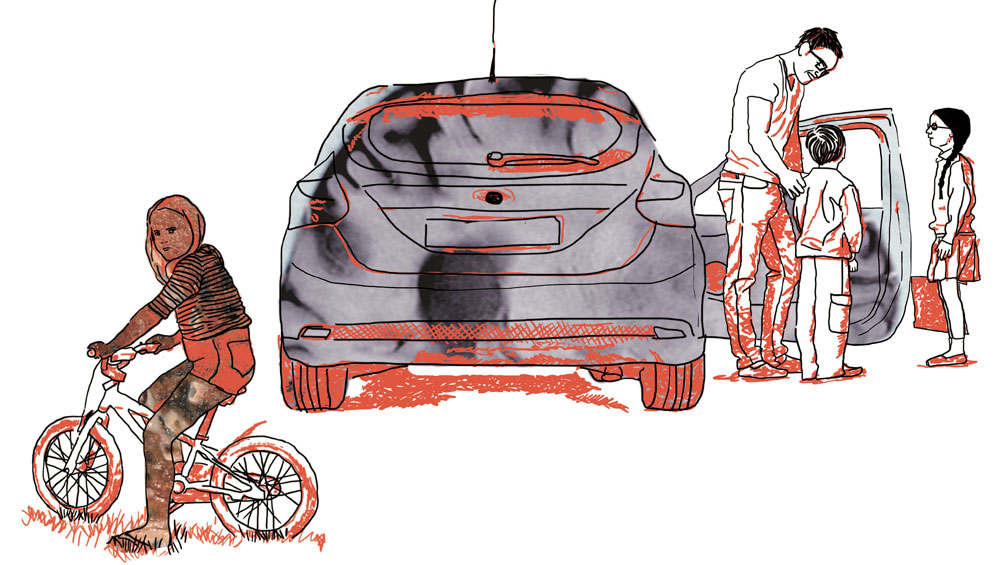
Lucy Kimbell, Air Pollution Toile, 2018 (detail). Photo © Lucy Kimbell.
Modern Art Oxford
22 September – 28 October 2018
by NICOLA HOMER
Shells used to depict seabirds in a work by Norwegian artist Eline McGeorge underline the environmental changes she observed one summer. In Trondheim, she met a biologist who described a colony of seabirds he had been studying. Each summer for the past 13 years, puffins had had their chicks, but the fish stocks had declined. The parent birds were flying back to the chicks, but with no fish in their mouths. The image of shells is a creative response to an environmental concern, seen in the exhibition Future Knowledge at Modern Art Oxford, which is part of Season for Change, a UK-wide programme that explores the role of culture in raising awareness of the environment.
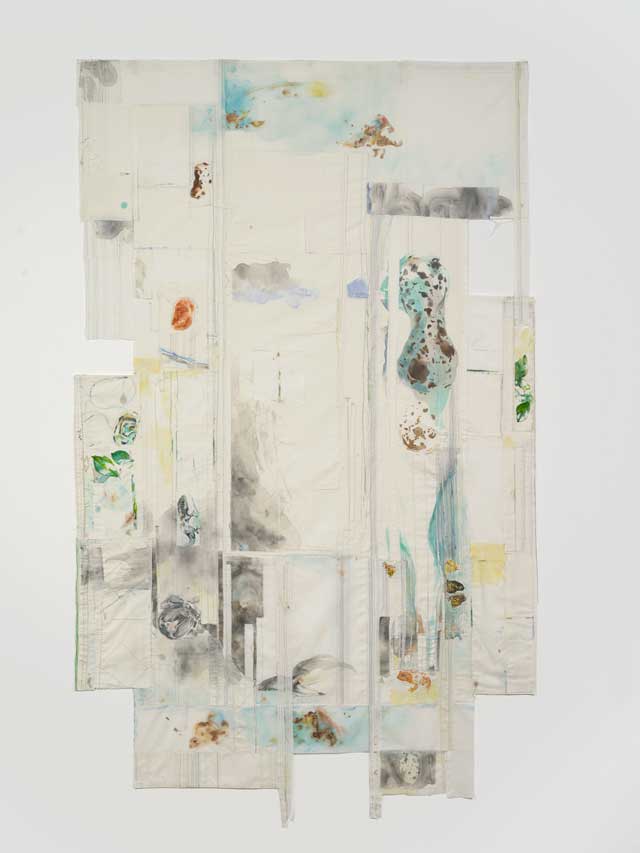
Eline McGeorge, On Joined Flight Lines 1, 2018. Courtesy of the artist and Hollybush Gardens. Photo: Andy Keate.
In another work, On Joined Flight Lines (2018), McGeorge has used watercolours on delicate fabric to symbolise an environmental cycle of damage and repair. British artist Tania Kovats’s vast poetic sculptures of steel and salt, Atlantic, Indian, Pacific (all 2015), are a reflection on the theory that the Earth has one self-regulated ocean, which suggests the British biochemist James Lovelock’s Gaia hypothesis – that the Earth is a living organism and can regulate its own environment. On the ground, you can see traces of graphite powder from the Estonian dancer Eve Mutso’s performance Loop. We could frame the show by looking at the American artist Rachel Sussman’s timeline, stretching back 750m years, in The Oldest Living Things in the World (2004-14).
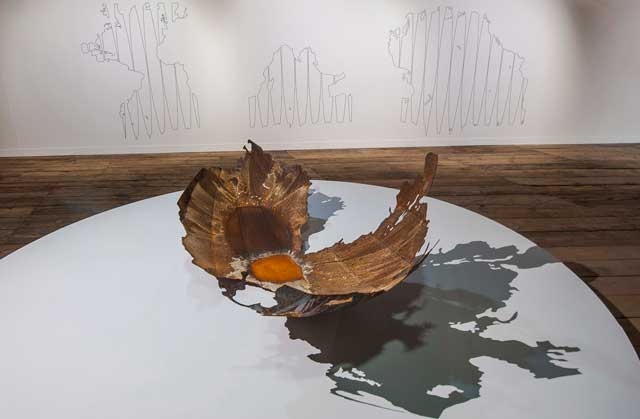
Tania Kovats, Atlantic, Indian, Pacific, all 2015. Courtesy the artist and Pippy Houldsworth Gallery, London. Copyright Chris Foster / Museum of Science and Industry, Manchester.
Spanning art, science and philosophy, Sussman’s acclaimed project shows the persistence of some living organisms, which can live for 2,000 years. With its long timescales, the work gives you a real sense of how fast climate change is happening, says Emma Ridgway, chief curator at Modern Art Oxford. She says: “It does make you recognise a mass extinction event of humans would not be completely unheard of when you look at a far longer timespan of the Earth and mass extinction events that have happened at other times. That we have caused it, that is unprecedented. The information Sussman presents puts one in mind to rethink the more conventional narratives about climate change, that most of us learn through the news.”
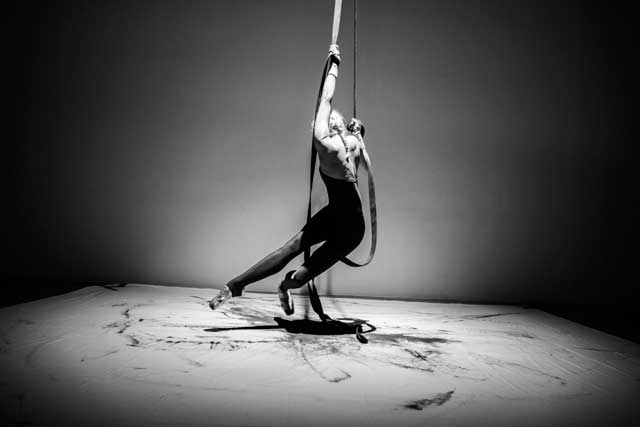
Eve Mutso, loop, 2018. Commissioned by The Fruitmarket Gallery, Edinburgh. Photo: David Grinly.
Last summer, extreme weather events were reported, including unusually high temperatures in Japan and wildfires in parts of the Arctic Circle. Melting ice sheets have been caused by a global temperature rise in recent years. This suggests that climate change has had an impact on the environment, which many scientists agree has most likely been caused by human activity since the mid-20th century. While Future Knowledge acknowledges these facts, the exhibition opens up the possibility that human creativity and ingenuity can bring about a positive change. In an interview at Modern Art Oxford before the exhibition opened, Ridgway talked about the idea of the Anthropocene as a starting point and what that means for how we can think about our impact as part of being within a living planet.
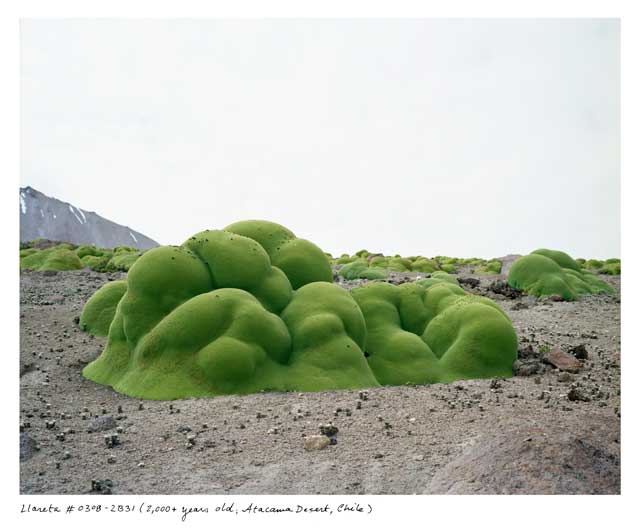
Rachel Sussman, Llareta #0308-2B31 (2,000 + years old; Atacama Desert, Chile), 2008. Photo © Rachel Sussman.
Ridgway says: “Seeing as we know climate change has happened, we trust the scientists … the larger substantial shift is being reported through science. We know that is the case, our impact only being since the mid-20th century onwards, and specifically triggered and started by western countries … How we need to think in terms of solutions to that, or reconceiving who we are as a large species on the planet and how we operate together, and how our aggregate actions impact things, that demands a different way of understanding ourselves.”
.jpg)
Future Knowledge, installation view, Modern Art Oxford, 2018. Photo: Ben Westoby.
In the gallery, a wall text reads, “please tread carefully”, an old environmental idea. This signposts the popular environmental movement. One of its landmarks was the American author Rachel Carson’s Silent Spring (1962), a call to action in response to the effects of industrial and agricultural chemicals. While the fact that Carson drew attention to environmental pollutants was vital, there is now a need to re-think it, explains Ridgway. “As the Swedish academic Hans Rosling wrote in Factfulness (2018), that fear of notions of toxicity from chemicals has spread through human thinking in a way that is counterproductive now … He traces it back to some ways in which the environmental push was reported.”
.jpg)
Future Knowledge, installation view, Modern Art Oxford, 2018. Photo: Ben Westoby.
Considering where we are now, Ridgway asks how we can move forwards with more hope and optimism, as fear shuts down people’s thinking: “The terror of climate change is something to dwell on usefully at times, but if you can’t move away from that existential terror, which is real, you also cannot initiate things, do things with people … Creativity needs quite a lot of energy and collaboration.”
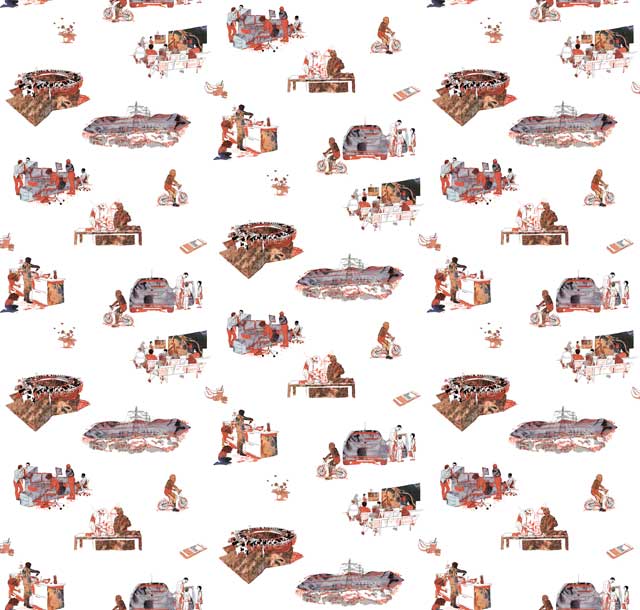
Lucy Kimbell, Air Pollution Toile, 2018. Photo © Lucy Kimbell.
This creativity can be seen in the British artist Lucy Kimbell’s wallpaper, which changes colour in response to air pollution, and the Shropshire-born artist Andy Owen’s installation Whole Milk (2018) about farming practices, which draws on research into ethical milk production in Oxfordshire. A local angle on environmentalism becomes apparent in a video exploring the durability of a lung-shaped sculpture in an ancient woodland, Wytham Woods. This sculpture has been created by participants in Modern Art Oxford’s How Nature Builds group, using mycelium, the underground root network of fungi, which is not only vital for plant life, but holds potential as a sustainable building material.
.jpg)
Andy Owen. Whole Milk, 2018. Installation view, Future Knowledge, Modern Art Oxford, 2018. Photo: Ben Westoby.
In the final part of the exhibition – a working studio – visitors can draw inspiration from biomimicry – which involves replicating innovations that occur naturally – in designs by the British architect Michael Pawlyn and prototypes modelled on stag horn and elk horn corals by Kovats. If you were repopulating a damaged coral reef, you could start with these corals. This kind of ingenuity is much-needed in light of news that World Heritage coral reefs, such as Australia’s Great Barrier Reef, are likely to disappear by 2100, unless carbon emissions are drastically reduced, according to a UNESCO report. This exhibition shows how valuable artists’ contributions could be, because they offer long-term visions that are relevant in view of the human propensity for short-term thinking. This is a thought-provoking exhibition.